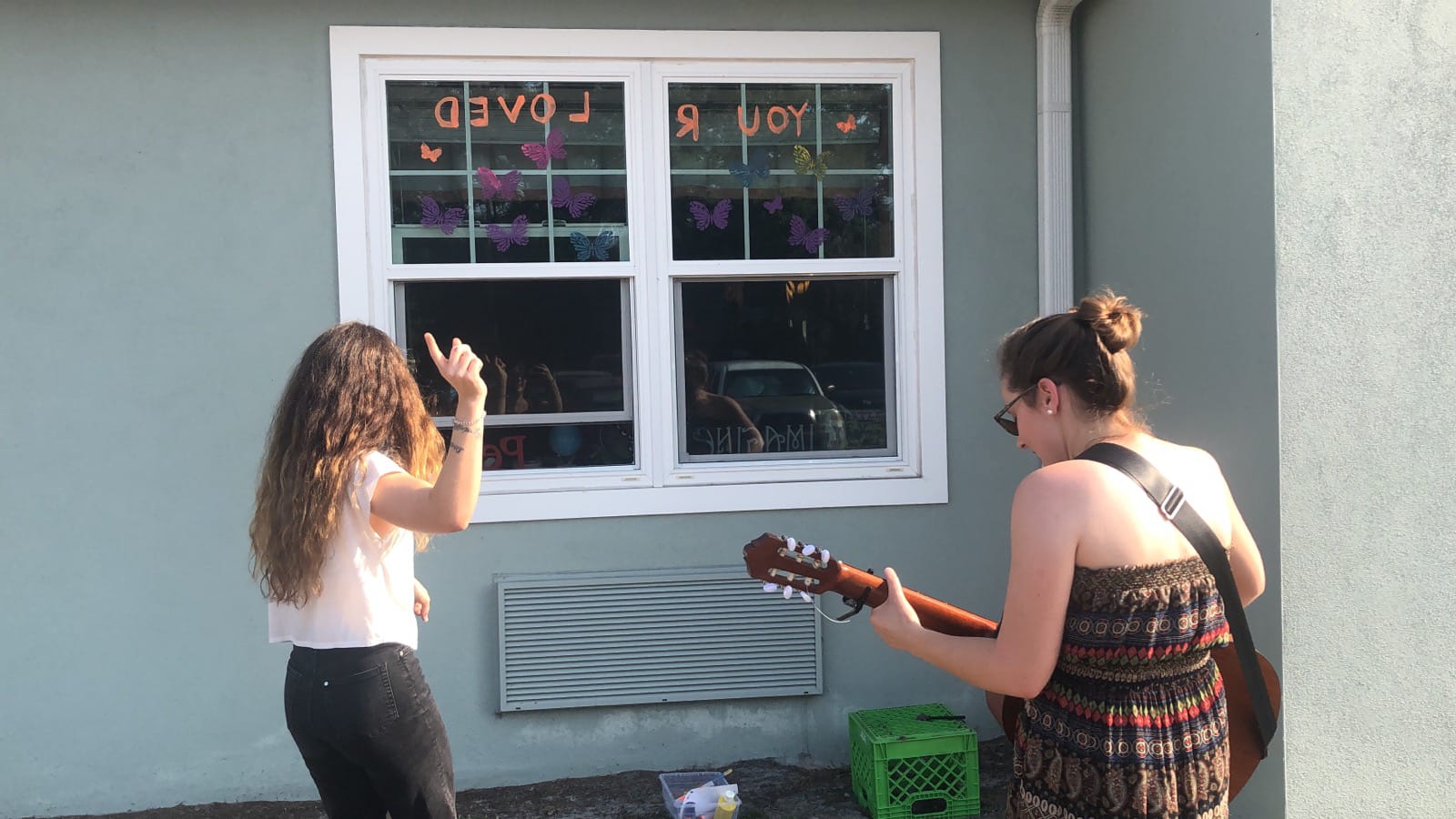Coronavirus is changing how people die - even if they don’t have it
Hospice patients at the end of their life cannot be with their families due to quarantines across the country

It is an uncomfortable truth that when a person dies from the coronavirus, they die alone. There may be a doctor or a nurse present to comfort them, but there is a separation: layers of protective clothing, a mask or a screen. Their family and their loved ones cannot be by their side.
This particular cruelty of the virus is now spreading beyond just those who are suffering from it. With strict social distancing in place for most Americans, hospices across the country are being forced to transform the way they care for patients at the end of their lives, no matter their illness.
“Our conversations have to stem around what is a good death in the now — recognising that some of the perfect end-of-life experiences might be slightly limited, or different,” says Yelena Zatulovsky, who has worked at the bedsides hospice patients and their families for 15 years. “It's made us far more creative in our care.”
Ms Zatulovsky, the vice president of patient care at Seasons Hospice & Palliative Care, one of the largest hospice providers in the country, says that while each patient has different hopes for how they will spend their final days, most have a strong desire to be surrounded by their loved ones. But even that simple need has become increasingly difficult in the age of the coronavirus.
“The biggest challenge has been getting family to the bedside,” she says. “There are times when people can't be present in the way that they would want. That can be difficult, particularly with that emotional disconnection that can happen from that isolation or withdrawal.”
Travel restrictions, quarantines and the need to protect an already vulnerable population have placed severe limits on who can visit the facilities. It has forced hospices to adapt. One solution they have used is to arrange virtual visits using video conferencing software. Ms Zatulovsky recounts one occasion in which the family of a patient was unable to reach the hospice because of a ban on travel over state lines, implemented to stop the spread of the virus. Instead, a nurse at the hospice took their place, and video-called them.
“We brought them into the visit virtually,” she says. “The patient's daughter just said, you know, if I was sitting there, I would hold my mom's hand. And instinctively that nurse said I can be the conduit for that. She just sat next to that patient in her protective equipment and just grabbed her hand immediately.”
Ms Zatulovsky says there have been numerous cases of patients at a hospice who were due to receive music therapy in their rooms, but were instead serenaded from the driveway of the nursing home or through windows. When 17-year-old Samuel Moritzkat could visit his 87-year-old grandmother, who is quarantined in hospice care in Missouri, that is precisely what he did.
What is important to ensure hospice patients stay comfortable during this time, she says, is planning. As of yet, no patients at Seasons Hospice have died without family members present.
“We've been proactively trying to have those dialogues earlier so that there is a plan in place for what that good death may look like now and how we can actually get the family to the bedside,” she says.
“Does that mean there may be some limitations, like one family member, where before we could have had a whole group? Possibly.”
There are changes taking place outside of patient care, too. Ms Zatulovsky says her organisation is using its experience in dealing with grief to reach out to medical professionals and people the community at large who might be struggling to come to terms with the high levels of deaths.
Being the only person present when a patient dies is something that medical professionals on the frontline of the coronavirus crisis have had to experience more and more as the outbreak has worsened.
Christianne Calderon, a nurse practitioner working in an intensive care unit at New York’s Presbyterian Hospital-Columbia University, told The Independent recently that talking to families who couldn’t be there at the end of their relative’s life was one of the hardest parts of the job.
“These patients are alone. They don’t have their families with them. I always get the question: ‘Can I visit?’ And I have to say: ‘No you cannot, but I’m here. I’m here for the next 12 hours. If you have to call, whatever questions that come to your mind, I will try my best to answer and you can find me.’”
“I hear them crying. They are asking for a promise that I can’t give and it’s hard for me. I feel devastated and frustrated for them. I’m pained by that,” she says.
Ms Zatulovsky says part of their outreach has been aimed at guiding medical professionals through these extra layers of grief.
“We try to let people know that what they’re feeling is normal. That they’re not alone in that experience.”
She also says that the difficult task being performed by doctors and nurses in intensive care wards across the country today, of just being there for a patient at the end of their life, even in the chaos of a pandemic, is important.
“Just being human, sitting in that space together, ensuring that that person isn't alone and has that experience of being touched, whether it's physically or emotionally — that kind of compassion is incredibly powerful,” she says.
“Silence and presence is golden. It’s about bearing witness and being able to be the last part of that person's story.”
Subscribe to Independent Premium to bookmark this article
Want to bookmark your favourite articles and stories to read or reference later? Start your Independent Premium subscription today.

Join our commenting forum
Join thought-provoking conversations, follow other Independent readers and see their replies